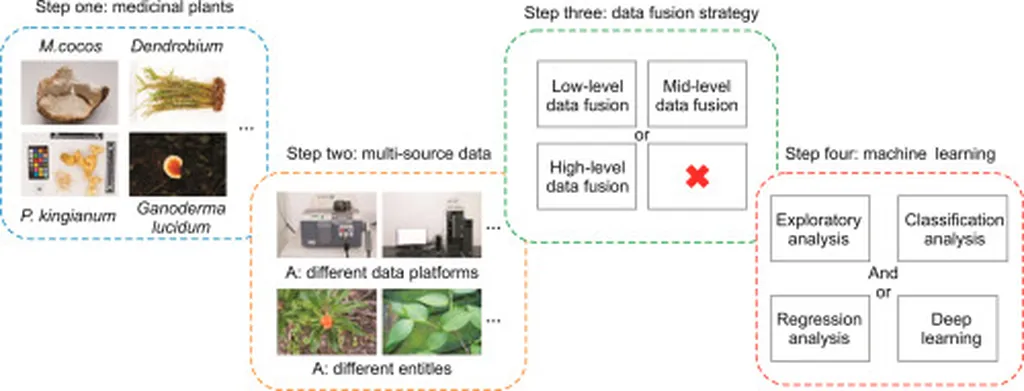In the heart of Bengaluru, India, a groundbreaking study led by N. Shobha Rani at the MURTI Research Centre’s Smart Agriculture Lab is revolutionizing the way we classify medicinal plant species. The research, published in ‘MethodsX’ (which translates to ‘Methods in Enzymology’ or ‘Methods in Molecular Biology’), addresses a critical challenge in the agritech and healthcare sectors: the reliable classification of medicinal plants, especially when species look strikingly similar or when datasets are imbalanced.
The study highlights the limitations of existing deep learning models like ResNet18 and VGG16, which tend to overfit and perform poorly under certain conditions. “We found that these models struggled with validation losses reaching up to 42.99% and test accuracy dropping to as low as 73.99% in some groups,” explains Shobha Rani. To tackle this, her team introduced a multi-level fusion feature model that combines 3D normalized color histograms, extended uniform Local Binary Patterns (LBP), multi-orientation Gabor filters, and Histogram of Oriented Gradients (HOG). This innovative approach captures a richer set of visual cues, including global color statistics, detailed textures, frequency-domain patterns, and shape descriptors.
One of the standout features of this research is the use of SMOTE-based synthetic augmentation to address class imbalance, ensuring that feature distributions are balanced across categories. The team also employed a soft-voting ensemble of machine learning classifiers for classification and used cosine similarity metrics to better capture inter-class relationships. The results are impressive: the model achieved 100% accuracy in Group 1, 95.82% in Group 3, and over 90% in other groups, outperforming deep learning baselines.
The implications of this research are far-reaching. Accurate classification of medicinal plants is crucial for ensuring their quality, authenticity, and safe use in healthcare. “Our model offers a more robust and computationally efficient solution for plant species classification, particularly under conditions of high inter-class similarity and dataset imbalance,” says Shobha Rani. This could significantly impact the agritech and healthcare industries, enabling more precise and reliable identification of medicinal plants, which in turn can improve the quality and safety of herbal medicines.
Beyond healthcare, this research has potential applications in biodiversity and ecological studies. The scalable ensemble framework proposed by Shobha Rani’s team supports these areas by providing a more accurate and efficient way to classify plant species. As the world increasingly turns to natural remedies and sustainable practices, the ability to reliably classify medicinal plants becomes ever more critical.
The study, published in ‘MethodsX’, represents a significant step forward in the field of medicinal plant classification. It not only addresses current challenges but also paves the way for future developments, offering a robust and efficient solution that can be applied to a wide range of plant species. As Shobha Rani and her team continue to refine their model, the potential for commercial and ecological impact grows, promising a future where the classification of medicinal plants is both accurate and accessible.

